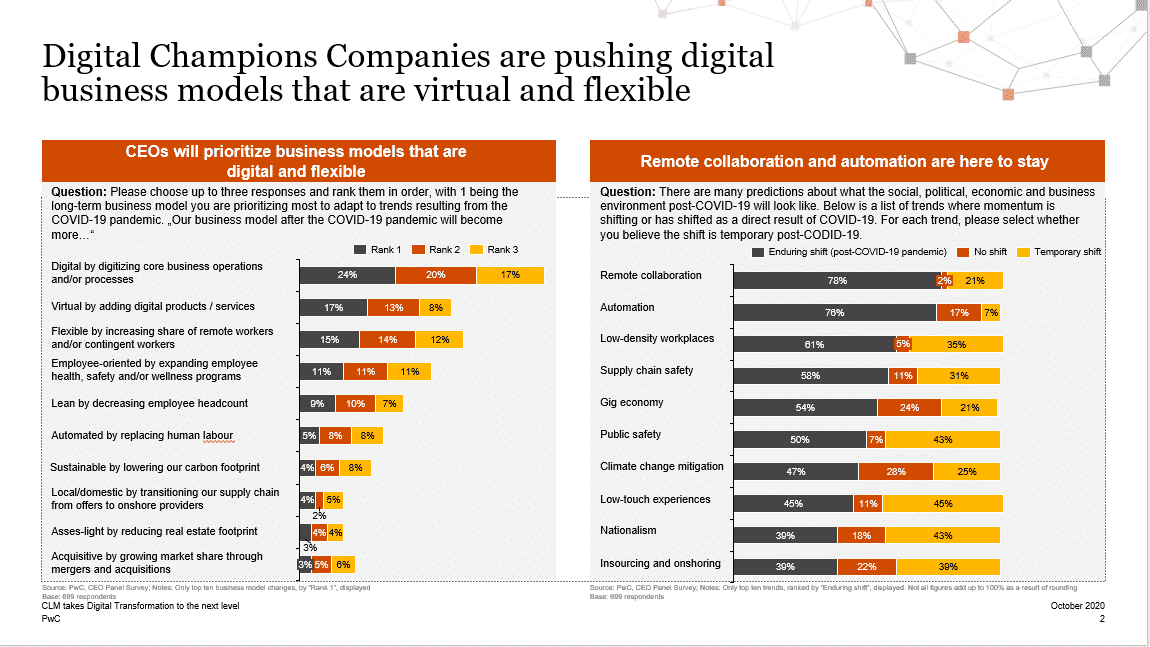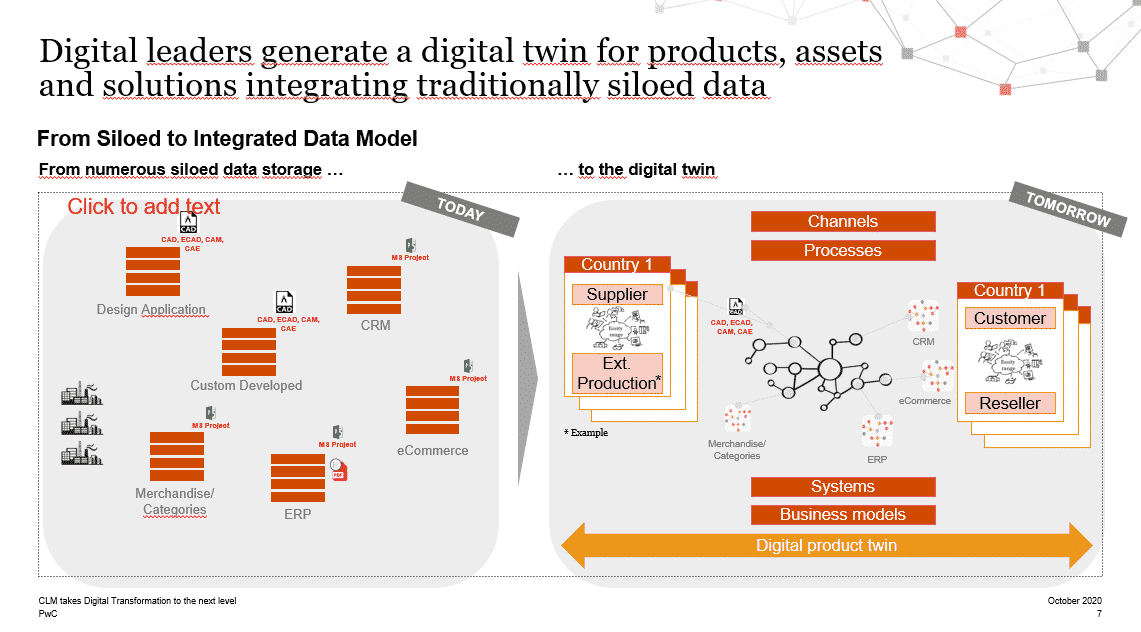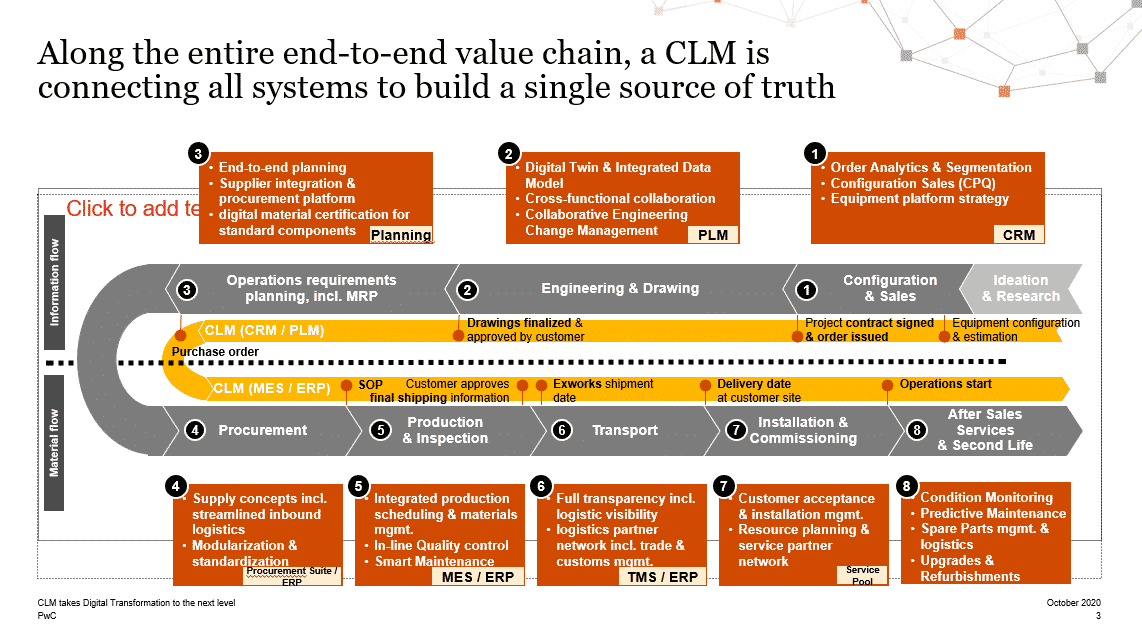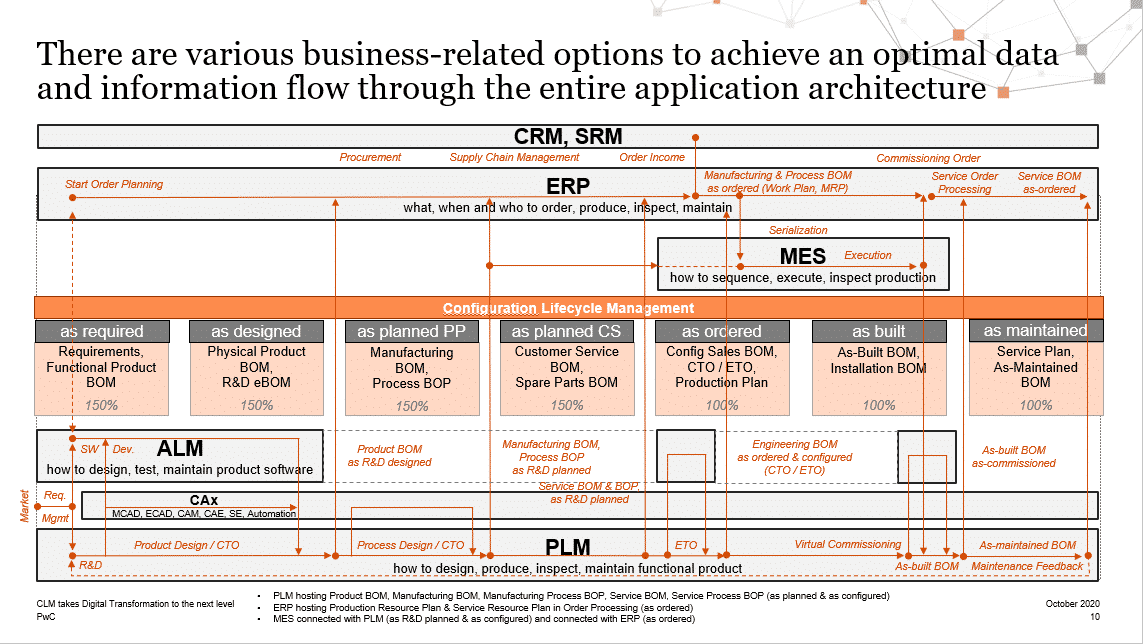One of the challenges of supporting new digital products, services and flexible business models is that current company IT infrastructures are a mix of siloed system solutions developed to address very specific challenges, at different times, and in very different ways. Each of these systems was developed in a different era making it difficult to create a common integrated data model. For example, ERP systems, which are broadly used to manage manufacturing, logistics and pricing, were first developed in the 1990s, while PLM and CRM systems were developed in the 2000s to manage product engineering and sales respectively.
While one of these systems, for example the PLM, could be used as the master for other systems, it would require extensive integration and adaptation of the data models and logic to reflect the needs and paradigms of other systems.
Consider the development of a digital twin for a given product. The purpose of the digital twin is to provide detailed information on the product for different needs spanning product engineering, manufacturing, sales and service. But, to do this, information from all the supporting IT systems needs to be integrated into a common data model that can be shared and understood for each application.






